Back on January, I did a post with a simulation about the DOP distribution for the Galileo and GPS constellations. In there, I computed the DOP for a grid of points on the surface of the Earth and then plotted maps with the average and worst DOP. I used three different kinds of constellation definitions, both for Galileo and for GPS: the base constellation, which has 24 satellites in both cases; an expanded constellation, which in the case of Galileo adds 6 spares and in the case of GPS has 27 satellites as defined in the 2008 SPS performance standard; and a real life constellation taken from the almanac at the beginning of January.
Since I wrote that post, the 2020 SPS performance standard came out in April. This defines a new expandable reference constellation of 30 satellites. Besides the three expandable slots on planes B, D and F, three new expandable slots are added on planes A, C and E, so that now there is one expandable slot per plane. All the RAANs and mean anomalies corresponding to the slots have also been updated, since the constellation is now referenced to an epoch on 2016 (the previous one had an epoch on 1993).
I have now run again my simulations using the 30 satellite expandable constellation, which provides a closer model to the real life constellation. Here I show briefly the results.
One interesting change between the 2008 and 2020 SPSs is the update of the reference constellation semi-major axis from 26559.7km to 26559.8km. It is commonly said that GPS satellites make two revolutions per sidereal day, but this is not exactly right. In fact, the semi-major axis needed for an orbital period of half a sidereal day is actually 26561.762km. According to the reference constellation, GPS satellites are approximately 2km lower than this, so they take a few seconds less than half a sidereal day to complete an orbit (5.02 seconds for the 2008 SPS orbit and 4.77 seconds for the 2020 SPS orbit).
This is not just a property of the reference constellation. If we look at the almanac data, we see that there is some variability in the semi-major axes, but they are closer to 266559.8km than to 26561.8km. Moreover, if we use the rate of change in mean anomaly corresponding to a semi-major axis of 266559.8km to propagate the almanac constellation at the beginning of 2020 to the epoch of the reference constellation at the end of 2016, we obtain good agreement, as shown below.
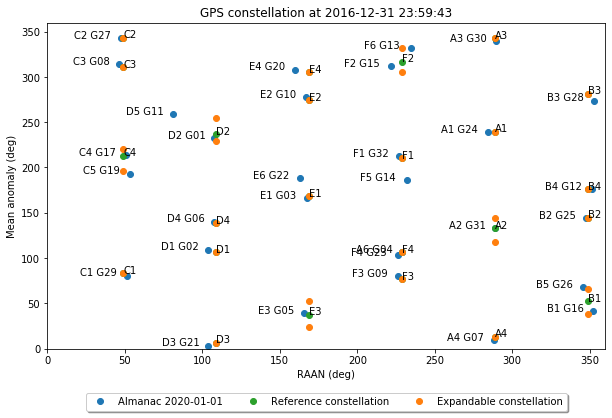
Here it is critical to use the correct value for the semi-major axis, since we are propagating for three years. Even a semi-major axis of 2666559.7km produces completely different results.
The real life constellation at the beginning of 2020 and the 30 satellite expandable constellation are quite similar. We might note the following differences: G11 is actually in a weird mid-plane position, but its mean anomaly matches the D5 slot its supposed to occupy; G22 and G14 are in “fake” expandable slots at E1 and F1; slot A2 is completely vacant; and also the expandable slot E3 has only one satellite. Therefore, we should expect similar results for the DOPs of the almanac and 30 satellite reference constellations.
The maps for average DOPs are shown below. Comparing them with those on the older post, the 30 satellite reference constellation gives a much better model for the real life almanac constellation. We now also have a fair comparison with the same number of satellites in the Galileo + spares and GPS expanded constellations. The results are interesting. The Galileo + spares constellation is based on a regular Walker constellation, so it should have better performance regarding worst DOP. On the other hand, the expanded GPS constellation is more irregular, so it gives worst results regarding worst DOP. The average performance is in general better for GPS, except near the poles, where Galileo wins.
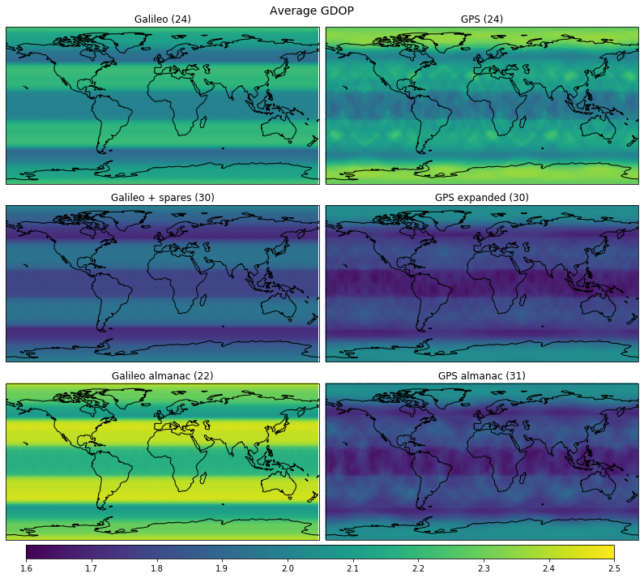

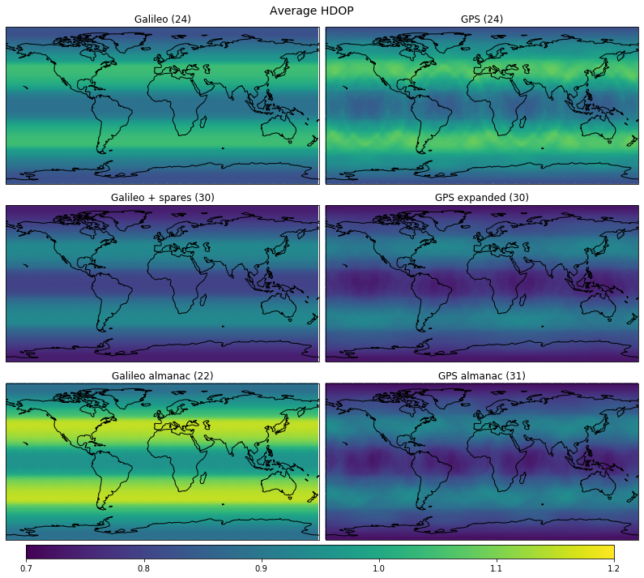
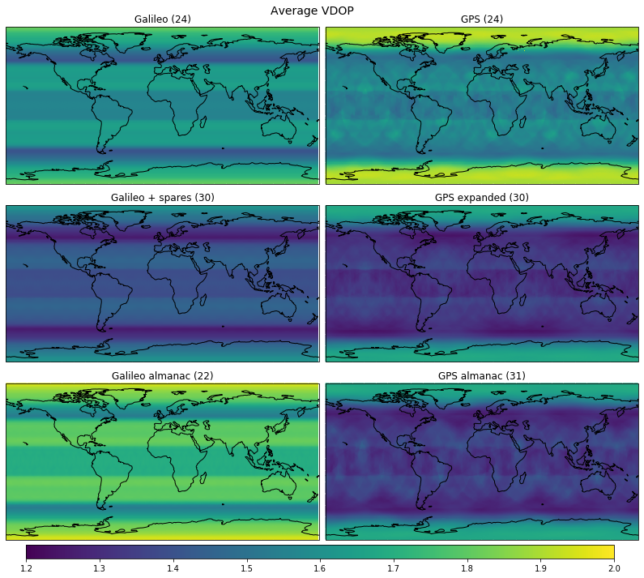
The maps for the worst DOP are shown below. Comparing with the 27 satellite GPS constellation, the 30 satellite constellation improves things significantly. Comparing the GPS almanac constellation and the 30 satellite reference constellation, we see that the almanac constellation has a few hot spots of large worst DOP, due to its irregularities. Even thought the 30 satellite expanded constellation is not optimized in terms of worst DOP, its performance is not so bad compared with Galileo, and actually its HDOP is noticeably better for lower latitudes.
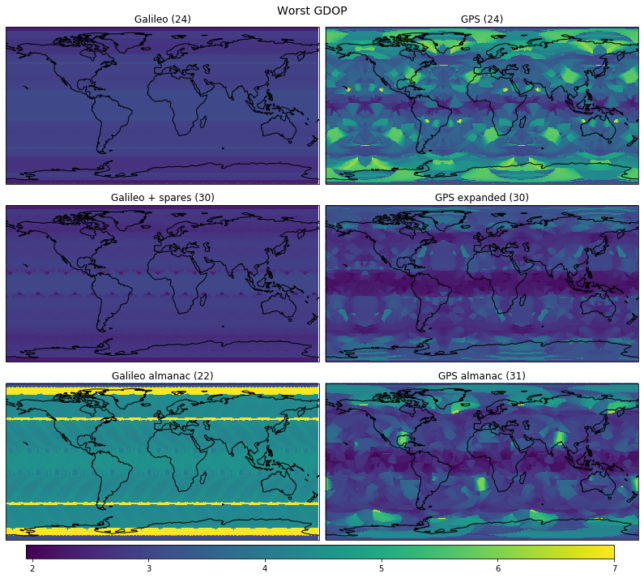
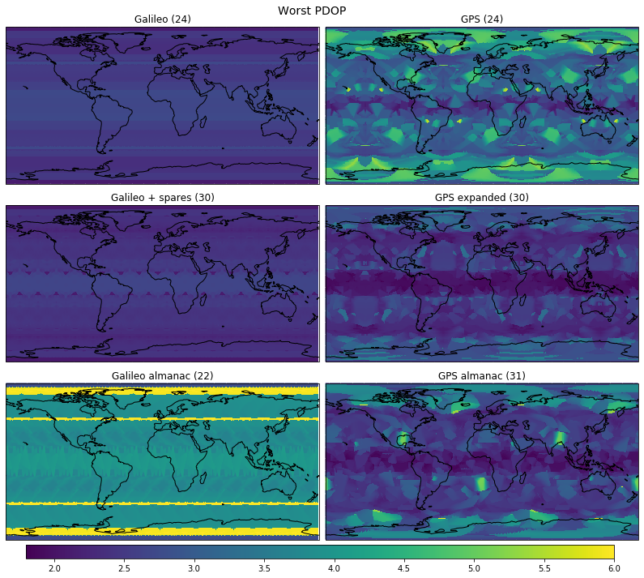
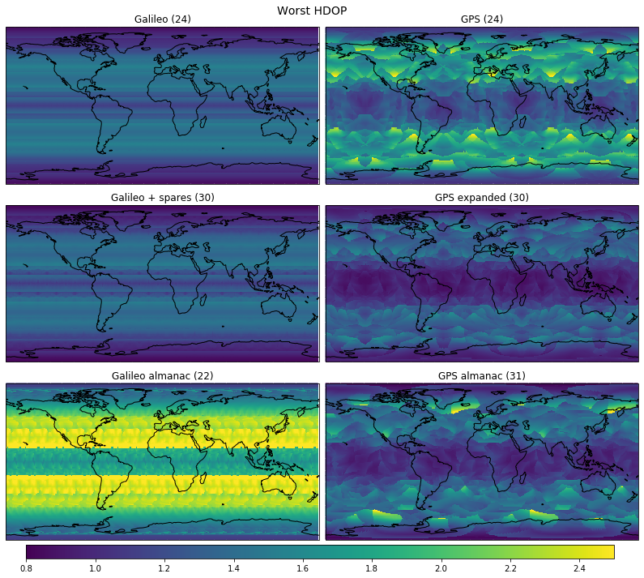

Looking at the average DOPs by latitude, we see that the GPS 30 satellite constellation is somewhat better than the Galileo 30 satellite constellation for latitudes below 55º. The situation reverses above 55º, where Galileo is better. The main contributor to this difference is the VDOP. We see that the HDOPs are quite similar.
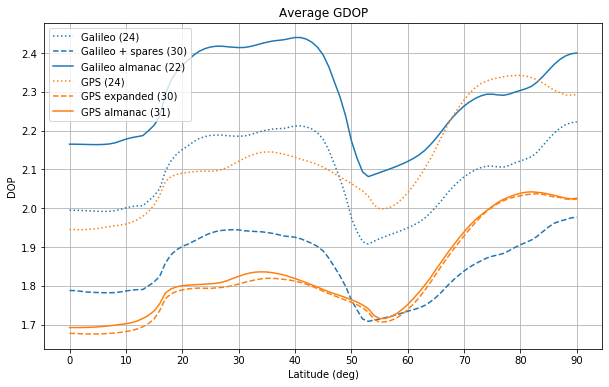
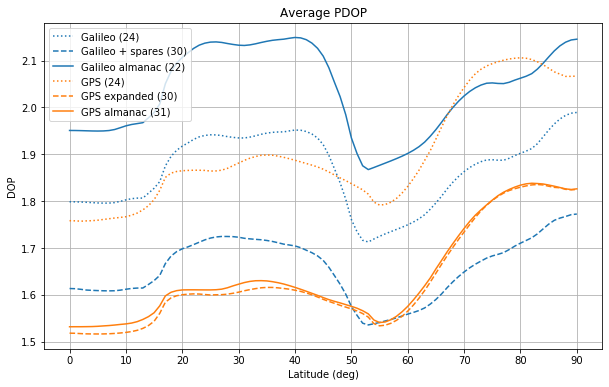
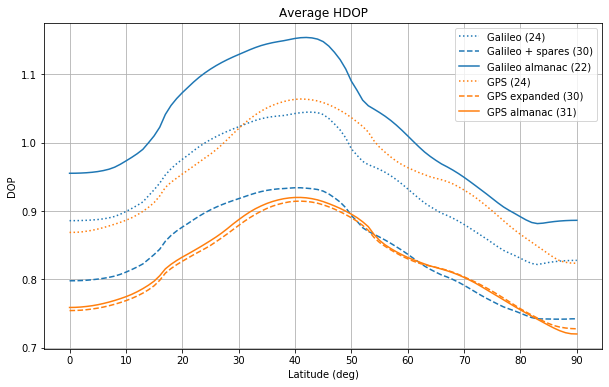

The worst DOPs by latitude are shown below. We note that the Galileo 30 satellite constellation gives the best results, except near the equator, where the GPS 30 satellite constellation is better. It is interesting that worst DOPs of the Galileo 24 and 30 satellite constellations are very similar, since the 24 satellite Walker constellation is already optimized to minimize the worst DOP.

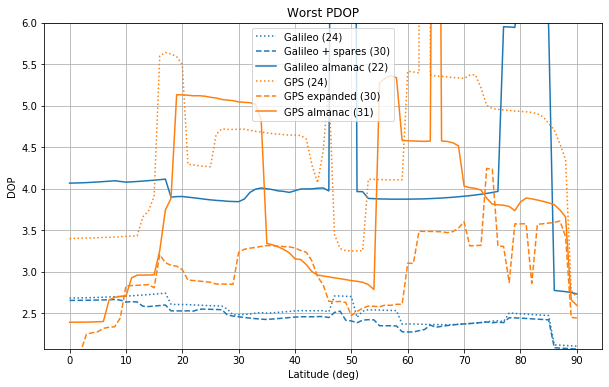
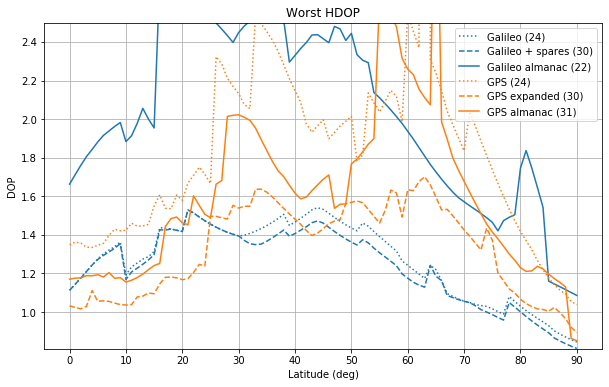
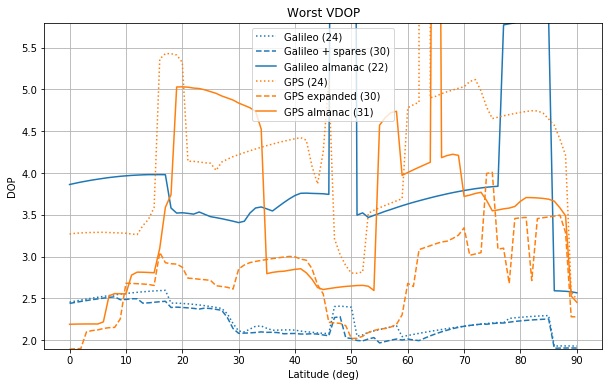
The updated Jupyter notebook and data for these simulations can be found in this repository.